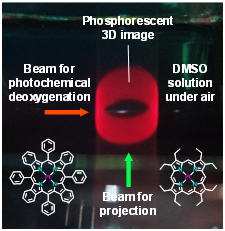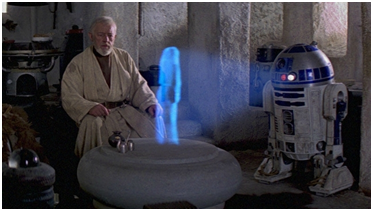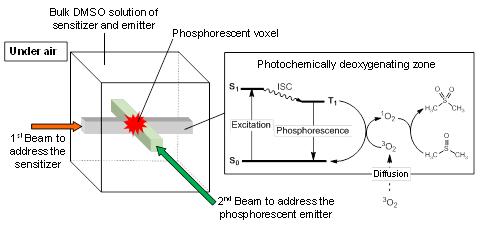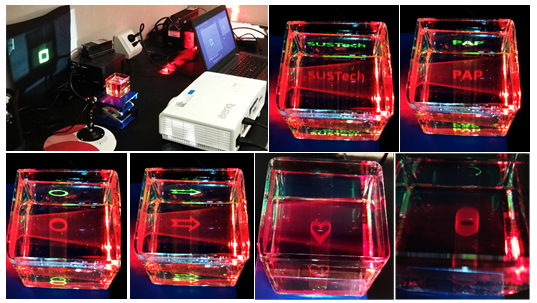Could Star Wars holograms become a reality?
2020-04-21
Science fiction is one step closer to reality following new research from Southern University of Science and Technology (SUSTech) that could ultimately see three-dimensional holograms in every person’s home.

Professor Wei Lu (Chemistry) has led his research team to publish a research article in the high-impact academic journal, Angewandte Chemie International Edition (Angew. Chem. Int. Ed.). The paper, titled “A Prototype of Volumetric Three‐Dimensional Display Based on Programmable Photo‐activated Phosphorescence,” provides a proof-of-principle prototype for a 3D display system that could potentially lead to the ultimate Star Wars or Star Trek moment in people’s homes.

The technology is the 3D stereo display technology, and its applications include medical, military, and architectural imaging. The movie franchise, Star Wars, featured a robot (or droid) called R2-D2 that could project three-dimensional (3D) images into the air. While that technology does not currently exist, considerable research is underway to try and replicate it.
The current principle uses small particles dispersed into the air or a solution to scatter, absorb or emit a laser beam to form the desired 3D image. New research has examined the use of molecular spectroscopy or photochemistry, but this technology requires high-intensity lasers, which can be dangerous and difficult to control.
The research group took a different path in developing a 3D display system model, based on photo-activated phosphorescence (PAP) of phosphorescent compounds. They leaned on their previous research published in Angew. Chem. Int. Ed. and Chem. Commun. (in 2018 and 2019) to design the 3D display and determine the optimal phosphorescent compounds to be used. The photosensitizer absorbs light energy and produces a triplet excited state, while oxygen absorbs that energy to form excited state oxygen (1O2). The reactions create a microenvironment where the laser beams pass, forming a virtual screen for the second light beam to excite the phosphorescent emitter. They combine to effectively form the 3D image at the intersection of the two light beams.
 3D display principle based on PAP
3D display principle based on PAP
As part of their evaluation, the research group was able to build a prototype display device. Their device could demonstrate a series of 3D images, animations, and text, as determined by the operators. They hypothesized that the color of the image could be varied if the correct phosphorescent molecules can be determined.

3D display device and display effect diagram based on PAP
This paper offers a significant commercial application for long-lived phosphorescent compounds. The 3D display system is simple to produce, requires low powered lasers, features high-contrast images, and is easy to see by the naked eye. The research team will continue to experiment with their technology for further applications.
Dr. Shigang Wan was the first author of the paper, and Professor Wei Lu is the correspondent author of the paper. SUSTech is the sole communications unit of the article. Other team members included Mr. Hongqi Zhou (graduate student), and Mr. Jinxiong Lin (now a doctoral candidate at Freie University Berlin following his graduation with a Master’s degree).
This work received support from the National Natural Science Foundation of China and Science and Technology Innovation Commission of Shenzhen Municipality and the Major Program of Guangdong Basic and Applied Research. Special thanks go to Prof. Hu Xu and Mr. Shuo Xu from the Department of Physics at SUSTech for the use of their BenQ MH741 projector.
Paper link: https://onlinelibrary.wiley.com/doi/10.1002/anie.202003160
We would like to dedicate this research article to the heroic city of Wuhan. Without the resolve of the people of Wuhan, this paper would not have been submitted and published during the epidemic.
Wei Lu




